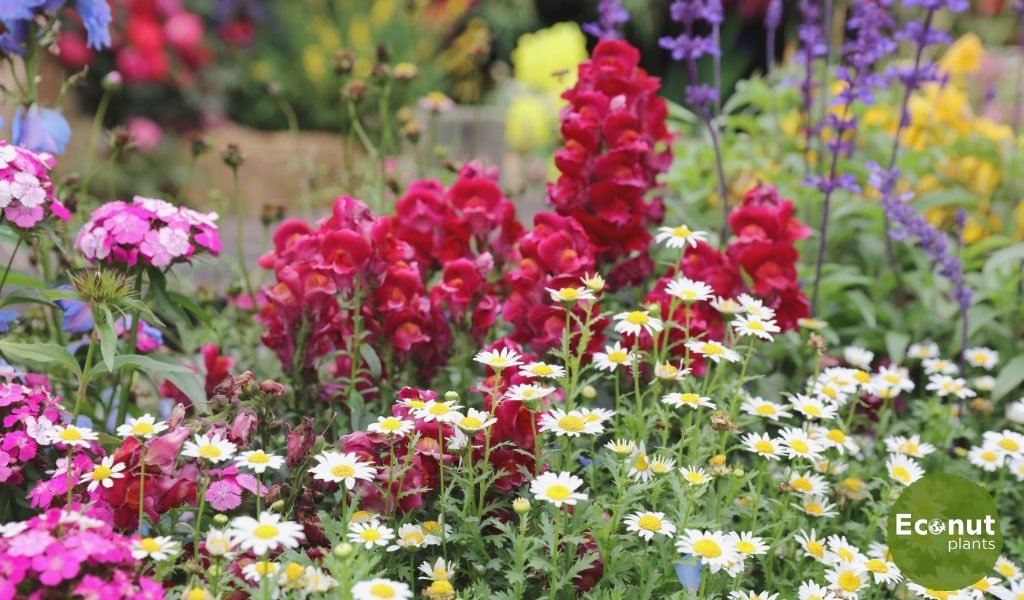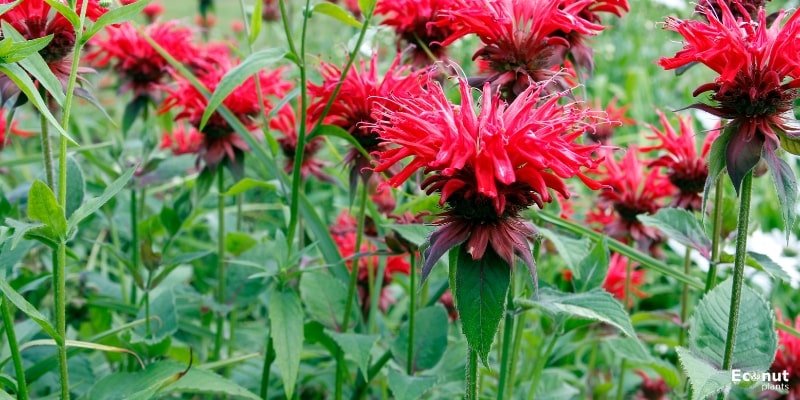The best perennial flowers require very little maintenance and offer years of gorgeous blooms, even though there are dozens of kinds to select from.
Are you considering adding some perennial flowers to your garden this year, but you’re not sure which kind to choose? Perennial flowers come in a plethora of varieties that are sure to add cheer to any garden. This article delves deeper into our top perennial flower picks, complete with names and images of each one.
1. Roses

Scientific name: Rosa
Soil type: Well-drained
Sun exposure: Full sun
USDA zones: 5-8
Roses are widely available and are a symbol of beauty, romance, and love. Common garden kinds include English roses, grandiflora roses, and tea roses. Roses grow back every year, but remember that each kind of rose may have somewhat different requirements.
2. Salvia

Scientific name: Salvia nemorosa
Soil type: Well-drained
Sun exposure: Full sun, Part shade
USDA zones: 4-8
These prickly flowers look best in full sun toward the back of your border. Once planted, they can withstand drought and flower for several weeks in the middle to late summer.
Issues with the deer? Usually, they don’t cause any trouble for salvia. Hummingbirds are among the pollinators who adore salvia!
3. Peony

Scientific name: Paeonia
Soil type: Well-drained
Sun exposure: Full sun
USDA zones: 3-8
Because they are long-lasting, peonies are a good investment for your perennial garden. Late April brings lush blooms into bloom. They have a wide range of hues and forms, and many of them smell strongly. Ants visiting flowers are not pests; they are just drinking from the nectar. Peonies need direct sunshine.
4. Bee Balm
Scientific name: Monarda didyma
Soil type: Medium to wet
Sun exposure: Full sun, Part Shade
USDA zones: 4-9
As its name implies, bees, along with hummingbirds and butterflies, find the peculiarly shaped bee balm to be essentially alluring. It prefers to be planted in the spring or fall; the fragrant, fringed petals appear in shades of pink, crimson, and purple and can withstand a high degree of weather. Assume that they receive adequate ventilation; if not, a fungal infection may occur on the leaves.
5. Crocosmia
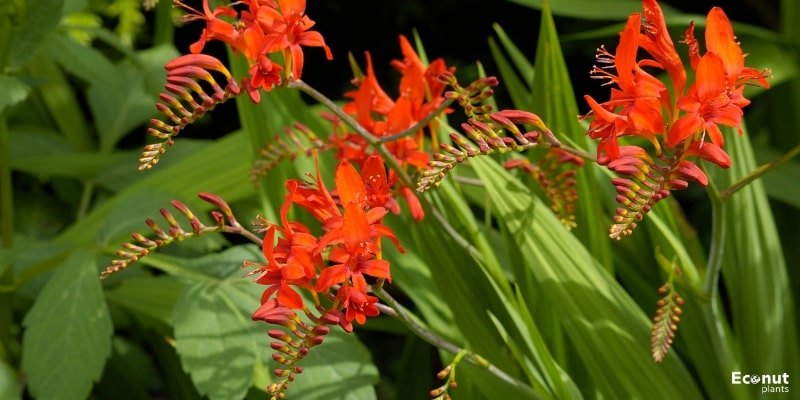
Scientific name: Crocosmia
Soil type: Well-drained
Sun exposure: Full sun, Part Shade
USDA zones: 6-10
Growing from bulb-like corms, Crocosmia is an herbaceous perennial that captivates with its orange, red, or yellow blossoms on thin stems from early to late summer.
It also has visually appealing, fresh green leaves in a lance-shaped shape. Excellent when adding a vertical component to a border. Grow in half shade or the sun, and seek cover from the cold in winter.
6. Asiatic Lily

Scientific name: Lilium auratum
Soil type: Well-drained
Sun exposure: Full sun
USDA zones: 4-8
Asiatic lilies are the best choice for consistent summer colour. A cheery assortment of yellow, orange, red, white, cream, rose, purple, and bicolour variations are available for these vibrant charmers.
Planting bulbs in the spring or fall facilitates the easy growth of these lilies. These robust plants produce larger, better clumps every year that you may split, share, and/or spread across your garden.
7. Black-Eyed Susan

Scientific name: Rudbeckia hirta
Soil type: Well-drained
Sun exposure: Full sun
USDA zones: 3-9
Native to North America, this plant is a biennial or short-lived perennial. Joyful daisy-like flowers in gold, bronze, red, orange, brown, or yellow attract bees and butterflies with their nectar, and in the fall and winter, songbirds feed on the seed heads.
8. Blanket Flower

Scientific name: Gaillardia
Soil type: Well-drained
Sun exposure: Full sun
USDA zones: 3-10
Given that wildflowers are already known to grow well in perennial gardens, they make a great choice for such spaces. Because of their easy growth and strikingly coloured blossoms, Lenhart suggests blanket flowers. It thrives in low-soil prairie and meadow habitats.
9. Daylily
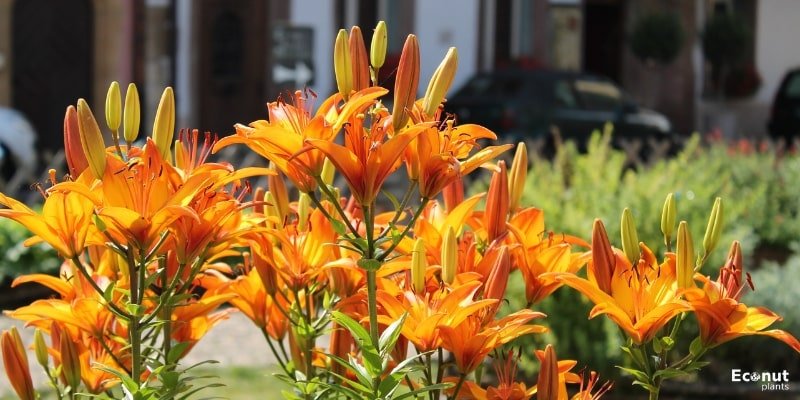
Scientific name: Hemerocallis sp.
Soil type: Well-drained
Sun exposure: Full sun
USDA zones: 3-9
Hemerocallis, or daylilies, are practically unbreakable and will bloom freely in nearly any sunny position. In addition to having a large variety of hues and bicolour, they are resistant to insects and drought. Additionally, daylilies are offered in bloomers that bloom in the early, mid, and late seasons.
For a flower display that lasts throughout the seasons, plant a few of each in your garden. Alternatively, cultivate repeat-blooming daylily types that bloom from April through autumn.
Over time, these resilient perennials grow into sizable clusters that require division every three to four years in order to maintain optimal blooming.
10. Tulips
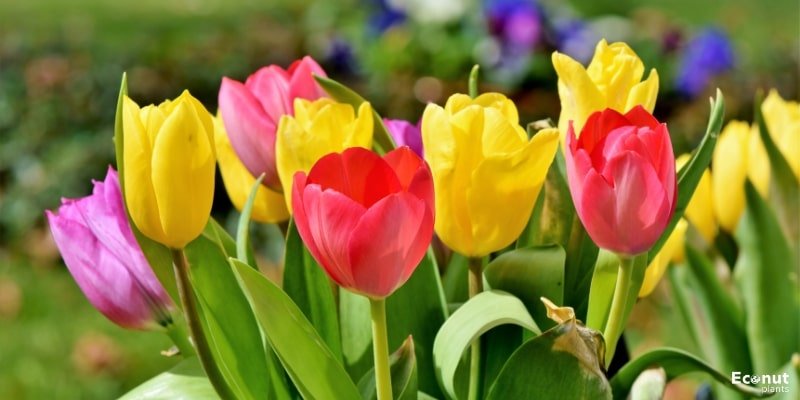
Scientific name: Tulipa
Soil type: Well-drained
Sun exposure: Full sun
USDA zones: 3-7
There is nothing like an exquisite, vibrant bloom to mark the arrival of spring each year. The colour variety of tulips makes them a simple bulb to grow. Plant them in late fall, and they will come up in time for a seasonal centrepiece—early spring, actually.
11. Blazing Star

Scientific name: Liatris spicata
Soil type: Well-drained
Sun exposure: Full sun
USDA zones: 3-8
The native wildflower known as “blazing star” draws pollinators to gardens. It likes soil that is well-drained, organically rich, and moist. Spikes covered in pink, purple, or white blooms can grow up to four feet tall.
From July until September, the dramatic impact of this linear design was evident. It also lasts a long time in vase arrangements due to its strong nature and bottom-up blooming habit.
For surprising vertical drama, interplant blazing stars at the midstory. Alternatively, for structural definition, place them behind beds and along the border.
12. Bellflower

Scientific name: Campanula medium
Soil type: Moist, well-drained
Sun exposure: Full sun, Part shade
USDA zones: 5-8
Bellflowers are a plant that also easily seeds, and they grow robust stems with perennial bell-shaped flowers in shades of pink, white, purple, and blue. It is an excellent second row in a landscape arrangement due to its medium height.
Its propensity for clumping and capacity for self-seeding guarantee that your patch will keep expanding every year. Bellflowers are ideal for cottage gardens and bordering areas because they provide the necessary pop of colour for summer in a small package.
13. Butterfly Bush “Blue Chip”

Scientific name: Buddleja
Soil type: Moist, well-drained
Sun exposure: Full sun
USDA zones: 5-9
Blue Chip is a new tiny butterfly bush series that blooms consistently from spring to fall with spikes of blue-lavender flowers. Additionally, this butterfly bush variety produces few seeds, making it less likely to get out of control than many others that spawn so profusely that some states have labeled them noxious.
14. Coral Bells
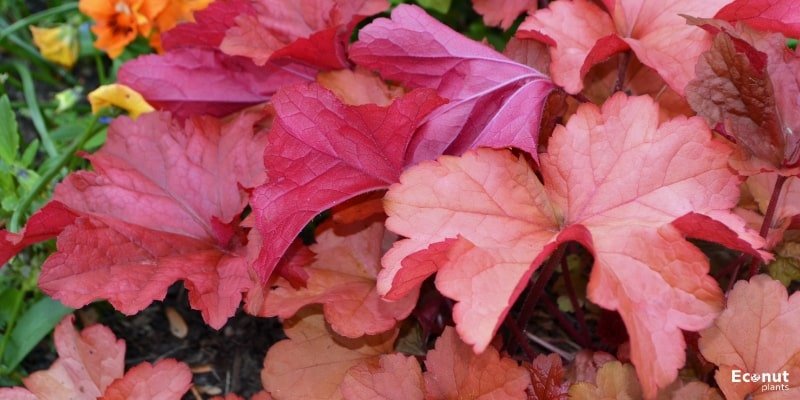
Scientific name: Heuchera
Soil type: Well-drained
Sun exposure: Full sun part shade
USDA zones: 4-9
Planting coral bell flowers in your garden will help attract hummingbirds! Known also as heuchera, these summer blossoms are characterized by bell-shaped clusters and are often burgundy in colour. If planted in either full sun or light shade, these perennial flowers look fantastic.
15. Foxglove

Scientific name: Digitalis
Soil type: Well-drained
Sun exposure: Full sun, Part shade
USDA zones: 4-9
Though the name is a bit strange, depending on the variety, these perennials produce eye-catching pink or white flowers. Carignan said they’re one of her favourite plants to plant because of this.
16. Chrysanthemum
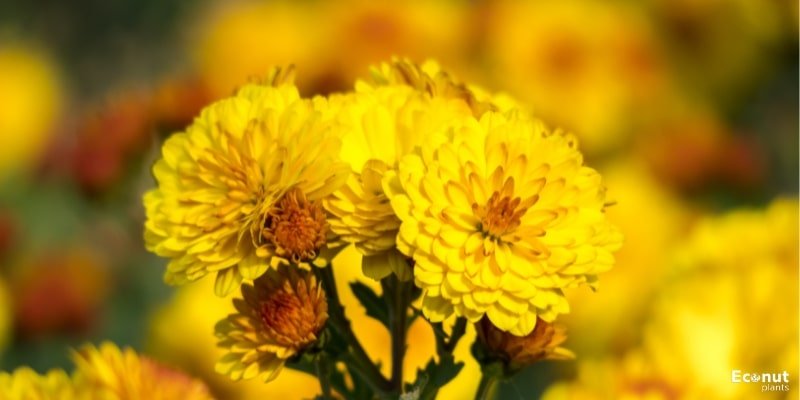
Scientific name: Chrysanthemum
Soil type: Well-drained
Sun exposure: Full sun
USDA zones: 5-9
These resilient autumnal favourites add a range of colours to your landscape, signalling the arrival of a new season. Garden mums can be further subdivided into a few distinct kinds of flowers, but all of them can be planted in the spring or summer and will bloom in a wide range of colours throughout the fall, including white, pinks, purples, reds, yellows, and oranges.
Pinch the buds on your mums if you have the time; you will be rewarded with larger, more visually striking flowers that will stand out in the landscape, even though you will have to wait longer for them to bloom.
17. Columbine
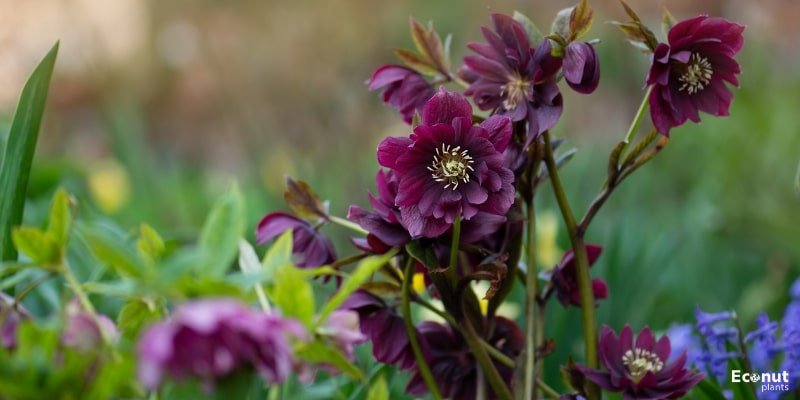
Scientific name: Aquilegia canadensis
Soil type: Well-drained
Sun exposure: Full sun, Part Shade
USDA zones: 3-8
Hummingbirds are drawn to the lovely forest perennial columbine, which has scarlet petals that fall like bells. Columbine spreads quickly by self-seeding and, once established, continues for years despite being a perennial.
18. Russian Sage
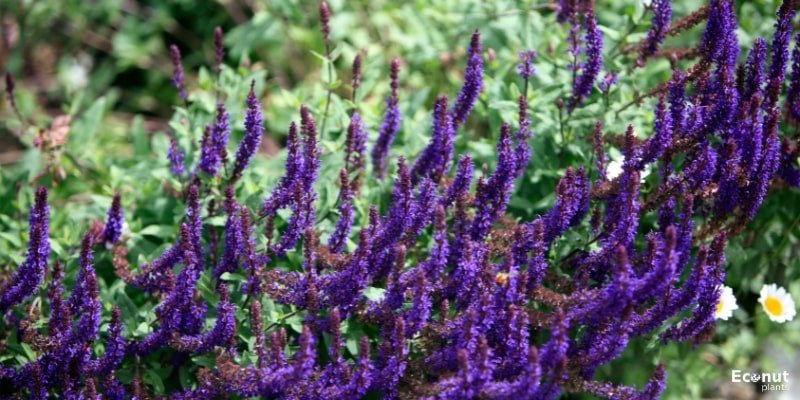
Scientific name: Perovskia atriplicifolia
Soil type: Dry to medium
Sun exposure: Full sun, Part Shade
USDA zones: 5-9
This lovely perennial boasts silvery foliage and long, thin panicles, or clusters, of small lavender-blue flowers that bloom from mid- to late-summer into fall. If you clip off blooms, you can encourage a second flush of growth. According to Yost, it’s a hardy plant that can withstand drought conditions.
19. Clematis

Scientific name: Clematis
Soil type: Moist, Well-drained
Sun exposure: Full sun
USDA zones: 4-9
Clematis is a vine flower that will add a pop of colour to a fence line or trellis. If you keep up with trimming, the ultra-vibrant purple-blue blooms are reasonably easy to grow.
20. Hellebore
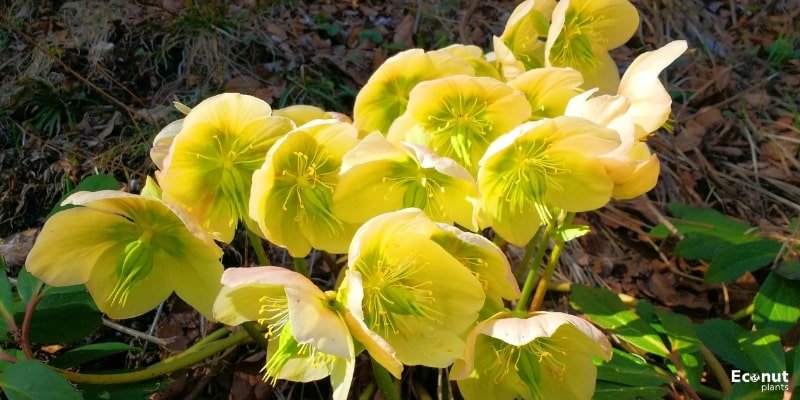
Scientific name: Helleborus
Soil type: Moist, Well-drained
Sun exposure: Full sun
USDA zones: 4-9
The uplift-inspiring hellebores blossom right when you thought winter would never end. Because of their early blossoming season, hellebores are sometimes referred to as Lenten or Christmas roses.
They are an excellent perennial flower for shade, adding much-needed colour to gloomy areas of the landscape with their nodding blossoms of pink, white, rose, green, purple, yellow, spotted, or bicolored. Additionally, they are the ideal partners for spring-flowering bulbs like narcissus and squill. Furthermore, deer and rabbits are hellebores.
21. Yarrow

Scientific name: Achillea millefolium
Soil type: Well-drained
Sun exposure: Full sun
USDA zones: 3-9
It’s possible that you’ve never heard of yarrow, but gardens would greatly benefit from its perennial bloom. “It’s native to most of the United States, drought-tolerant, and attractive to a wide range of pollinator species,” according to Lenhart.
This kind of plant is hardy in almost any type of soil and is available in a variety of colours to complement any style of garden design.
22. Mother of Thyme
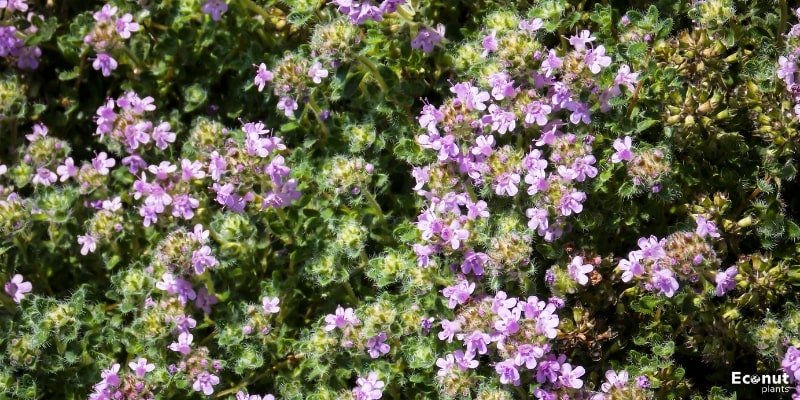
Scientific name: Thymus serpyllum
Soil type: Well-drained
Sun exposure: Full sun to part shade
USDA zones: 5-8
The Mother of Thyme is a low-growing ground cover plant that has colourful, fragrant foliage. This option, also known as the Creeping Thyme Plant, works well as a blooming lawn alternative, bordering a vegetable garden, or placed in between stepping stones. Furthermore, the leaves are perfect for infusing in soothing teas and potpourris.
23. Thrift
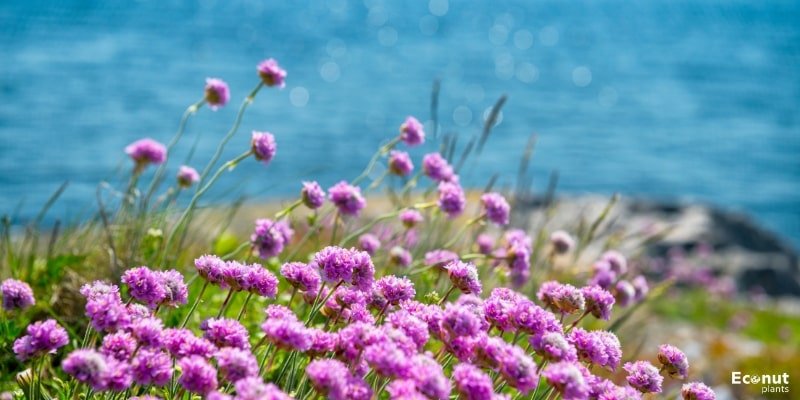
Scientific name: Armeria maritima
Soil type: Well-drained
Sun exposure: Full sun
USDA zones: 4-8
The small, ball-shaped blooms that appear in late spring and early summer are the main attraction of this perennial, even if its green foliage is lovely throughout the growing season.
24. Penstemon
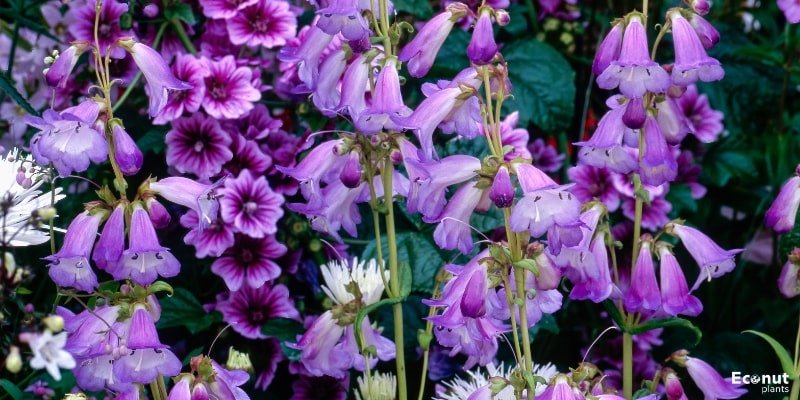
Scientific name: Penstemon
Soil type: Well-drained
Sun exposure: Full sun
USDA zones: 3-8
Beardtongue, or penstemon, is a robust summer flower that loves the sun. Due to its resistance to predators and drought, this plant is ideal for any type of garden. Hummingbirds and butterflies are drawn to the deep-throated pink flowers, which have burgundy or deep green foliage.
25. Goatsbeard
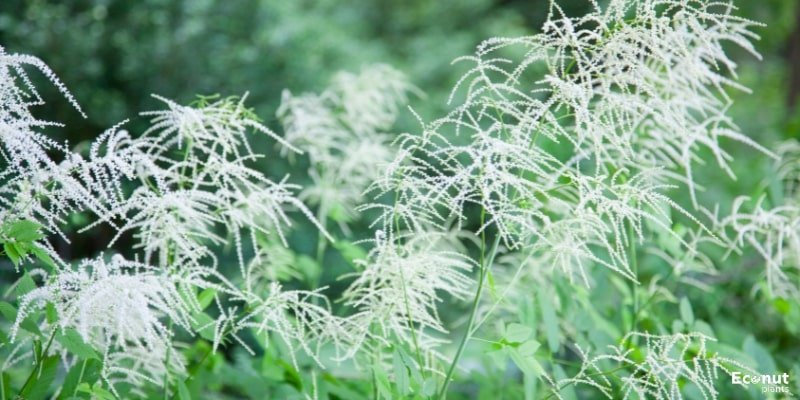
Scientific name: Aruncus dioicus
Soil type: Well-drained
Sun exposure: Full sun, Part Shade
USDA zones: 3-7
Plant this shady perennial to give your yard quirkiness and charm. It has fluffy plumes of cream-colored flowers that bloom in late spring or early summer, surrounded by dark green leaves that resemble ferns.
Bonus points: Not only can this plant withstand any kind of storm, but it has even been known to endure tornadoes unscathed!
26. Delphinium
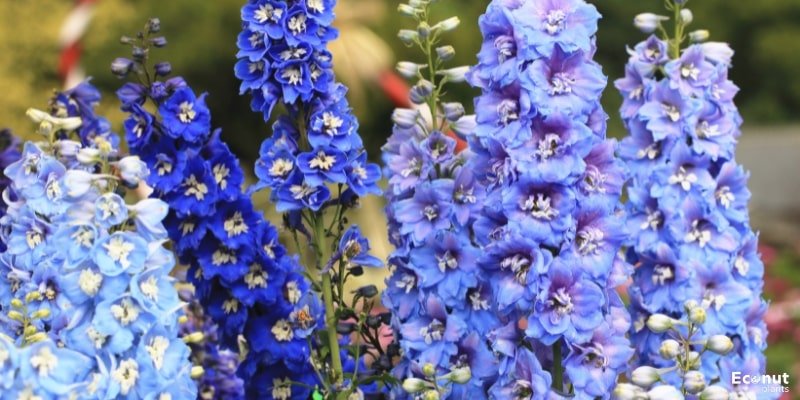
Scientific name: Delphinium elatum
Soil type: Well-drained
Sun exposure: Full sun
USDA zones: 3-7
The delphinium plant produces weeks’ worth of colour because of its towering stems covered in several exquisitely stunning flowers that unfold gradually from bottom to top.
The most common colours are mauve, pink, white, and blue. Slugs and snails are drawn to young stems and divided leaves, which can be deterred with barrier granules or an eco-friendly bait.
27. Hosta
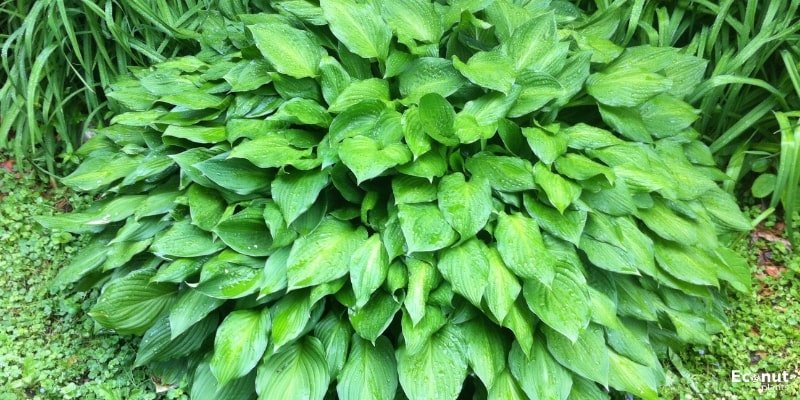
Scientific name: Hosta
Soil type: Well-drained
Sun exposure: Full sun
USDA zones: 3-8
Hostas are a reliable choice for your landscape’s shaded areas. These shade-loving perennials range in size from 4-inch dwarfs to 4-foot giants, and they are colourful and dependable. Hostas are renowned for their gorgeous foliage, which can be blue, green, chartreuse, or bicolour.
However, they also produce spikes of pink, lavender, or white flowers that attract butterflies, hummingbirds, and bees. Hostas thrive in pots as well, so consider adding a few of your favourites to a container along with a few annuals that tolerate moderate shadow, such as begonias and impatiens.
28. Lavender

Scientific name: Lavandula
Soil type: Well-drained
Sun exposure: Full sun
USDA zones: 3-8
This perennial flower will provide a soothing touch to your garden’s sunny locations with its long-lasting, sweetly scented summer blossoms. Many bees love it, but Wright says it’s also an excellent plant to repel unwelcome insects who don’t find the aroma as appealing as humans do.
29. Scabiosa
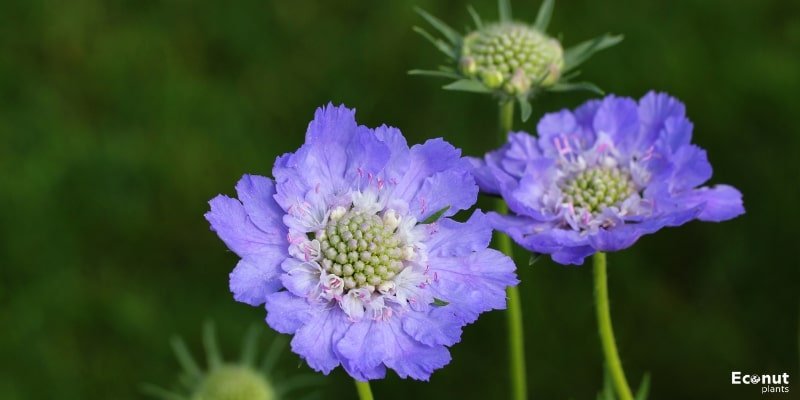
Scientific name: Scabiosa
Soil type: Moist, well-draining
Sun exposure: Full sun, Part shade
USDA zones: 3-7
These tiny blooms, which are also called pincushion flowers, bloom from the end of summer to the beginning of fall. They come in a range of colours, including red, pink, white, ivory, and purple. To keep the flowering, you’ll need to deadhead them and place them in a sunny or semi sunny position to encourage growth.
30. Coneflower
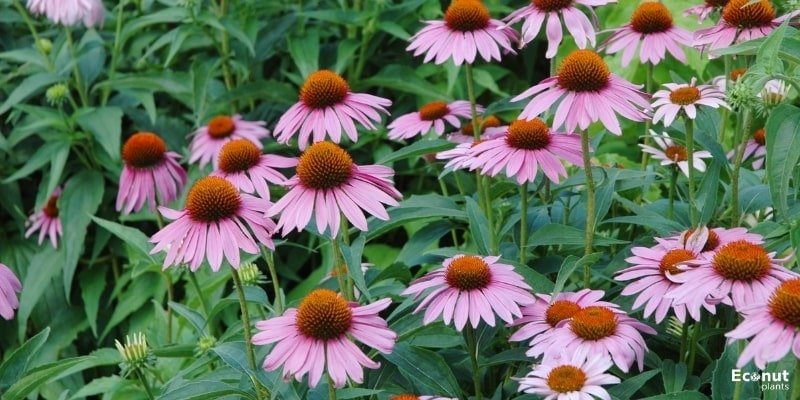
Scientific name: Echinacea purpurea
Soil type: Well-draining
Sun exposure: Full sun, Part shade
USDA zones: 3-8
Coneflowers are among the most popularly planted and modified perennials in the nation; they are native to the American prairie. Apart from cultivating single flowers, you may also produce doubles or even triple-petalled types.
In addition to the classic purplish- ink, there are other colours including white, orange, yellow, and red. Birds and butterflies are drawn to them as they bloom from early summer to fall.
31. Guara
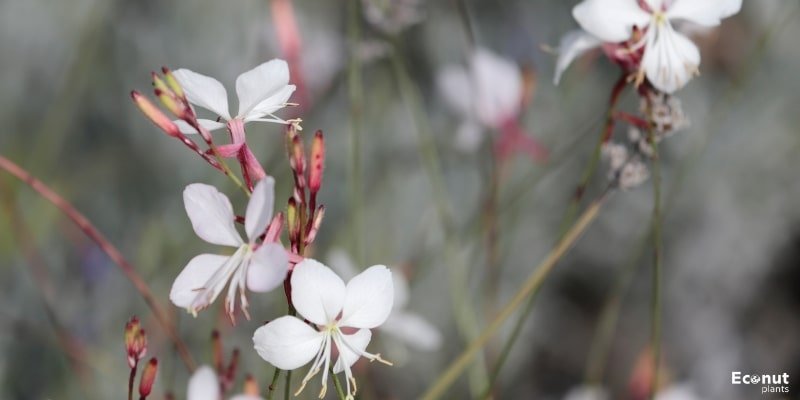
Scientific name: Oenothera lindheimeri
Soil type: Sandy
Sun exposure: Full Sun
USDA zones: 5-9
Known by another name, Whirling Butterflies, these blooms resemble butterflies as they flutter in the wind. They thrive in direct sunlight and are native to arid regions of the south.
32. Catmint
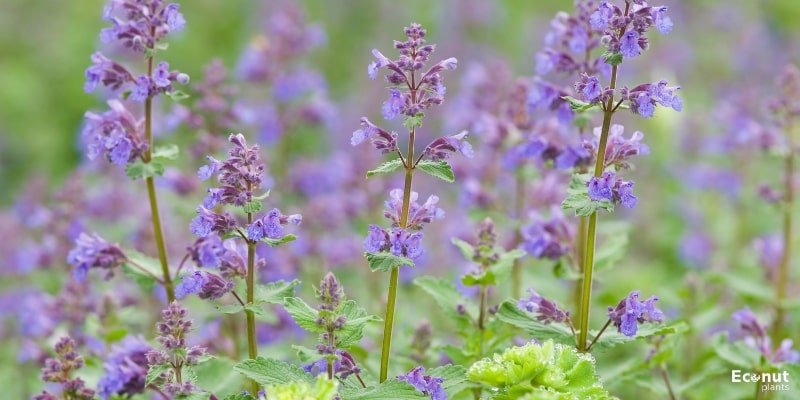
Scientific name: Nepeta cataria
Soil type: Well-drained
Sun exposure: Full Sun, Part shade
USDA zones: 4-8
This sturdy substitute is a great option if you enjoy the way lavender looks but dislike tending to your yard. A cousin of catnip, catmint grows well in nearly any type of soil and has blossoms in spring that can last up to six weeks.
To promote a second flush of flowers in late summer, trim it back as it starts to look lanky. Blooms might be pink, white, or yellow in addition to lavender.
33. Cushion Spurge
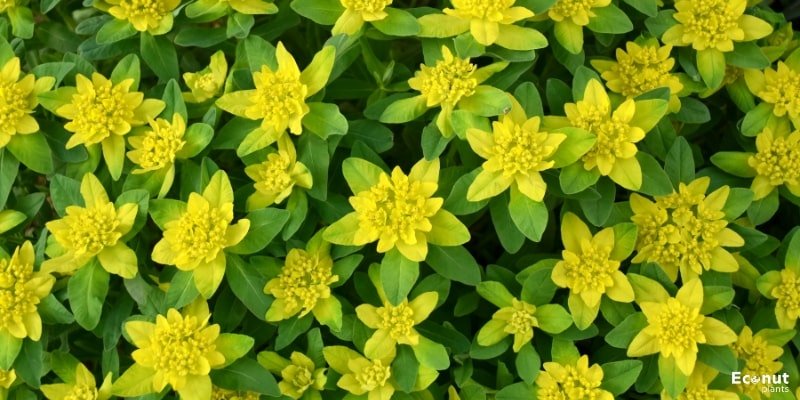
Scientific name: Euphorbia epithymoides
Soil type: Well-drained
Sun exposure: Full Sun
USDA zones: 4-8
A natural plant called cushion spurge rises from mounds of green foliage to produce chartreuse flowers. This plant blooms in the early spring, turns crimson in the fall, and in the early summer becomes a vibrant chrome-yellow. It is a striking plant for the perennial border that is also beneficial to butterflies and resistant to drought and deer!
34. Bleeding Heart

Scientific name: Lamprocapnos spectabilis
Soil type: Well-drained
Sun exposure: Part shade
USDA zones: 3-9
You’ll understand its common moniker once you take a peek at this. Any garden will benefit from the attention-grabbing heart-shaped blooms that bloom in shades of pink or white. Bleeding hearts are frequently used in bouquets and grow well in shade.
35. Aster

Scientific name: Aster
Soil type: Well-drained
Sun exposure: Full Sun
USDA zones: 3-9
A New England aster could pass for a mother if it weren’t so tall. When it blooms in late summer and early autumn, it resembles a mom. However, because of its height, it stands out in the autumn and adds a lovely dotted backdrop to an autumn landscape.
After aster finishes flowering, trim it almost to the ground to make way for the spring. It looks especially lovely when combined with mums and coneflowers. Moreover, you can prune summer blossoms to make a bushier shrub in the autumn.

